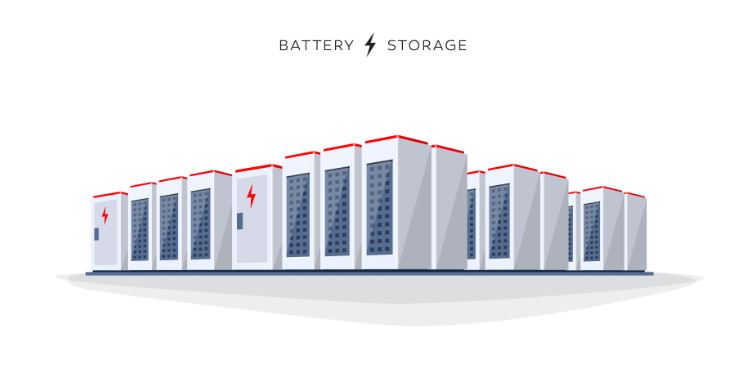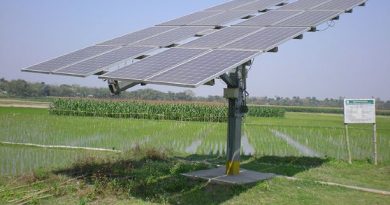Explained. Why Battery Storage Will Decide Future Renewable Energy Growth
 Time for Storage to Stand Alone?
Time for Storage to Stand Alone?
Last week, French renewable energy developer Neoen won a contract from the Victoria state government in Australia to build the biggest battery in Australia in Geelong. The 300MW/450MWh Victorian Big Battery will be built by Tesla, which also holds the record for the previous biggest battery of the 150MW/194MWh at the Hornsdale Power Reserve. The Hornsdale battery serves the south Australian Grid.
So just why is Australia, and increasingly, the rest of the world, going in for large scale batteries? What do they do? And yes, how do they deliver a return on investment (ROI)? We answer some of these questions here.
While battery storage is no new phenomenon, with most reservoir based hydropower qualifying as such, battery ‘packs’ in MW plus sizes , based on Lithium ion batteries is a relatively new thing, only catching attention of the broader world after the Hornsdale power reserve went online. Today, developments in technology and a drop in costs have enabled battery storage to be commercially viable when it comes to storing energy during peak production and release during peak demand, and for use when production unexpectedly falls giving time for slower responding resources to be brought online. The latter because of the exceptionally fast response time of such batteries, unlike say Hydro based options.
For instance, the new big Victoria battery being built by Tesla, will use the new 3MWh Megapacks, which Tesla unveiled on its battery day event, and can deliver a major peaking plant four times quicker than traditional fossil fuel projects.
The new large batteries have also been essential to support the deeper penetration of renewable energy generation in grids. By allowing power to be stored when there is low demand, and released when demand spikes, these batteries can potentially smooth out power supply, helping make renewables a much more critical part of the grid. They can also save investments into grid reinforcement or peak generation. This is best illustrated by how some states in India pay a high fixed cost to generators for being on stand by to provide power during peak demand periods, which may or may not happen. These fixed costs add to the final consumer’s bill eventually.
Keep in mind that it was the intermittent nature of most renewable energy, (solar in the daytime, and wind in the evenings) that led to monikers like ‘trash energy’ in China and elsewhere until recently. Similarly, even in India, baseload power, required to maintain grid stability, has been cited to justify continued dependence on fossil fuel plants, or be wary of renewable energy by discoms. Add to that the higher cost of renewable energy signed up till about 2016-17, and you realise just how vital batteries will be to the future of renewable energy.
In batteries too, there are two use cases. FTM (Front of the meter) batteries are connected to distribution or transmission networks or in connection with a generation asset. In other words, under the control of the power generator. They provide applications required by system operators, such as ancillary services or network load relief. BTM (Behind the meter ) batteries are are behind the utility meter of commercial, industrial or residential customers. We are discussing FTM batteries therefore.
Without batteries, or storage, the key renewable energy in use today, solar and wind energy, would struggle to make a case for say, round the clock supply, or as dependable peak power supply. Which explains why 790 MW of hybrid projects are expected to be commissioned in the next two quarters in India . These projects combine solar+wind, and in some case, even a battery, to make the power supply more predictable from the projects. Going forward, analysts have estimated that between 40 to 60 percent of fresh utility scale renewable projects might need to have a storage component, as the energy transition unfolds. For markets like India and China, with vey high thermal dependence, getting it right on time is even more important to prevent disruptions.
In an electrical grid without energy storage, generation based on fuels like coal, biomass, natural gas, nuclear must be scaled up and down to match the rise and fall of electrical production from intermittent renewable sources . While hydroelectric and natural gas plants can be quickly scaled up or down , coal and nuclear plants take considerable time to respond to load shifts. Utilities with less natural gas or hydroelectric generation are thus more reliant on demand management, grid interconnections or costly pumped storage.
One reason why the storage market is expected to explode along with solar and wind growth, helped along by ever lower prices.
Grid operators also manage grid demand by demand side tactics like time of use pricing, something we might see more of in India with higher smart meter penetration. At the household level, consumers may choose less expensive off-peak times to wash and dry clothes for instance. Similarly, industrial consumers might try and shift some activities to off-peak times to save money. One reason we made such a strong pitch for Tesla in India .
Key terms to keep in mind when talking about storage are:
• Rated power capacity is the total possible instantaneous discharge capability (in kilowatts (kW) or megawatts (MW)of the BESS, or
the maximum rate of discharge that the BESS can achieve, starting from a fully charged state.
• Energy capacity is the maximum amount of stored energy (in kilowatt-hours (kWh) or megawatt-hours (MWh)
• Storage duration is the amount of time storage can discharge at its power capacity before depleting its energy capacity. For example, a
battery with 3 MW of power capacity and 10 MWh of usable energy capacity will have a storage duration of 10 hours.
• Cycle life/lifetime is the amount of time or cycles a battery storage system can be charged and discharged before significant degradation sets in.
• Round-trip efficiency, measured as a percentage, is a ratio of the energy charged to the battery to the energy discharged from the
battery. It can represent the total DC-DC or AC-AC efficiency of the battery system, including losses from self-discharge and other
electrical losses. Utilities generally see relevance in AC-AC efficiency only.




